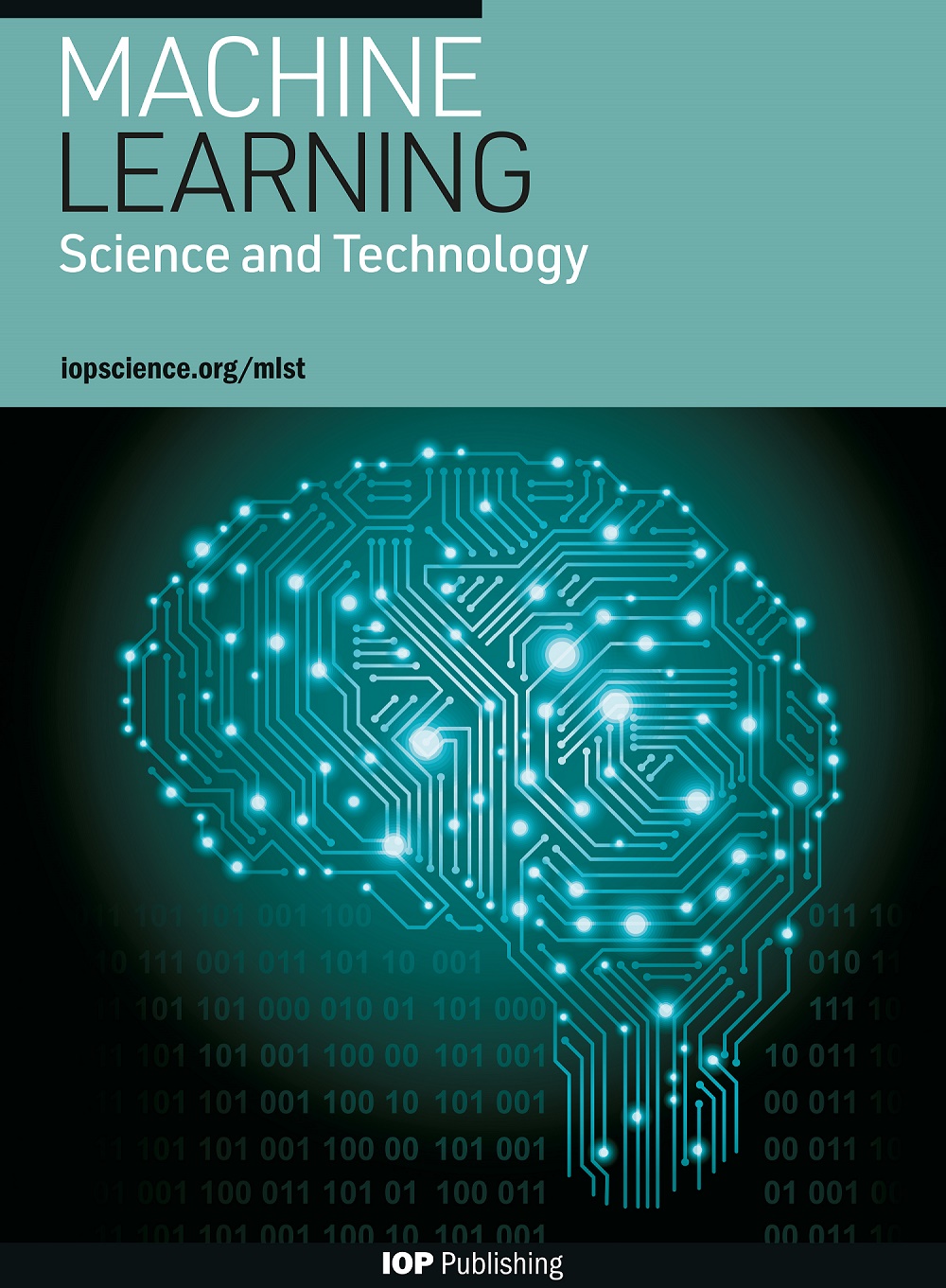针对金属表面活性氢动力学的机器学习原子间位势基准测试
IF 4.6
2区 物理与天体物理
Q1 COMPUTER SCIENCE, ARTIFICIAL INTELLIGENCE
引用次数: 0
摘要
模拟气体表面动力学中的化学反应概率需要计算数以万计反应事件的集合平均值,以预测可与实验进行比较的动力学观测值。与此同时,还需要精确绘制能谱,因为壁垒的微小误差就会导致反应概率的巨大偏差。这给机器学习原子间势带来了特别有趣的挑战,而机器学习原子间势正在成为加速分子动力学模拟的成熟工具。我们对最先进的机器学习原子间势进行了比较,重点关注它们在 CPU 上的推理性能以及是否适合表面反应化学的高通量模拟。所考虑的模型包括可极化原子相互作用神经网络(PaiNN)、递归嵌入式原子神经网络(REANN)、MACE 等变图神经网络和原子簇扩展势能(ACE)。这些模型被应用于铜的低指数表面面上的反应分子氢散射数据集。对所有模型的准确性、求解时间以及模拟反应性粘滞概率的能力进行了评估,并将其作为分子振荡初始状态和动力学入射能的函数。REANN 和 MACE 模型在精确度和求解时间之间取得了最佳平衡,可以说是目前最先进的气体表面动力学模型。PaiNN 模型需要许多特征才能达到最佳精度,这就大大降低了计算效率。ACE 模型提供了最快的求解时间,但在现有数据集上训练的模型并不能在所有情况下都实现足够准确的预测。本文章由计算机程序翻译,如有差异,请以英文原文为准。
Benchmarking of machine learning interatomic potentials for reactive hydrogen dynamics at metal surfaces
Simulations of chemical reaction probabilities in gas surface dynamics require the calculation of ensemble averages over many tens of thousands of reaction events to predict dynamical observables that can be compared to experiments. At the same time, the energy landscapes need to be accurately mapped, as small errors in barriers can lead to large deviations in reaction probabilities. This brings a particularly interesting challenge for machine learning interatomic potentials, which are becoming well-established tools to accelerate molecular dynamics simulations. We compare state-of-the-art machine learning interatomic potentials with a particular focus on their inference performance on CPUs and suitability for high throughput simulation of reactive chemistry at surfaces. The considered models include polarizable atom interaction neural networks (PaiNN), recursively embedded atom neural networks (REANN), the MACE equivariant graph neural network, and atomic cluster expansion potentials (ACE). The models are applied to a dataset on reactive molecular hydrogen scattering on low-index surface facets of copper. All models are assessed for their accuracy, time-to-solution, and ability to simulate reactive sticking probabilities as a function of the rovibrational initial state and kinetic incidence energy of the molecule. REANN and MACE models provide the best balance between accuracy and time-to-solution and can be considered the current state-of-the-art in gas-surface dynamics. PaiNN models require many features for the best accuracy, which causes significant losses in computational efficiency. ACE models provide the fastest time-to-solution, however, models trained on the existing dataset were not able to achieve sufficiently accurate predictions in all cases.
求助全文
通过发布文献求助,成功后即可免费获取论文全文。
去求助
来源期刊

Machine Learning Science and Technology
Computer Science-Artificial Intelligence
CiteScore
9.10
自引率
4.40%
发文量
86
审稿时长
5 weeks
期刊介绍:
Machine Learning Science and Technology is a multidisciplinary open access journal that bridges the application of machine learning across the sciences with advances in machine learning methods and theory as motivated by physical insights. Specifically, articles must fall into one of the following categories: advance the state of machine learning-driven applications in the sciences or make conceptual, methodological or theoretical advances in machine learning with applications to, inspiration from, or motivated by scientific problems.
 求助内容:
求助内容: 应助结果提醒方式:
应助结果提醒方式:


